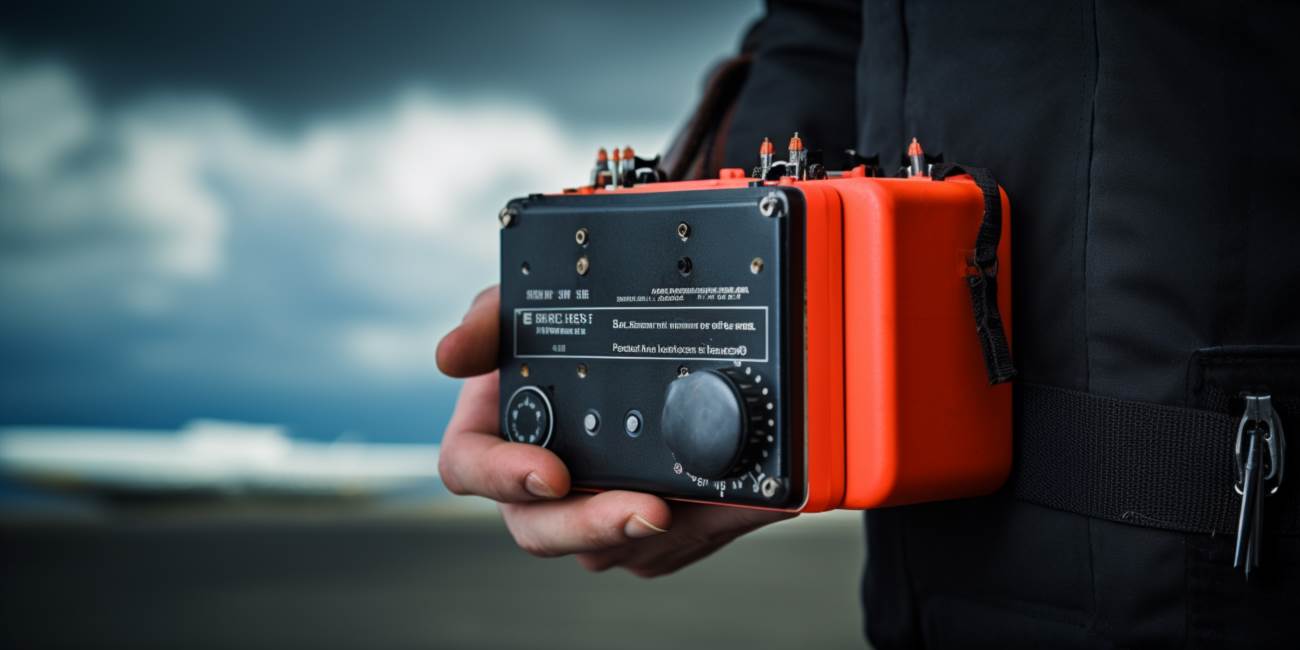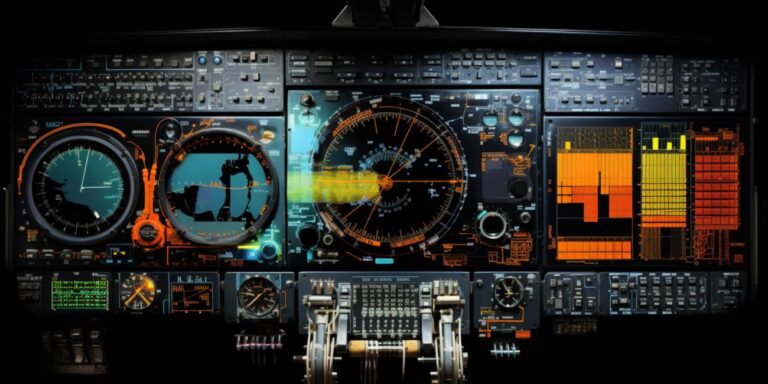The decision to paint these essential devices in a color that is far from black may seem counterintuitive at first glance. However, the choice of orange is strategic and serves a vital purpose in the event of an aviation accident. The distinctive hue significantly aids in the search and recovery process, as the color stands out against various terrains and is easily spotted, even in water.
Imagine the challenging task of locating a small object in the vastness of the ocean or a dense forest. The orange color of aircraft black boxes plays a critical role in increasing visibility, allowing search and rescue teams to swiftly locate and retrieve these devices, which hold crucial information for investigating the causes of accidents.
The orange color is not arbitrarily chosen but is based on extensive research and analysis of visibility factors in different environments. This color choice aligns with the recommendations of international aviation organizations, emphasizing the importance of rapid identification and retrieval of black boxes after an incident.
Additionally, the exterior of aircraft black boxes is designed to withstand extreme conditions. The casing is constructed with materials that can endure high-impact forces, intense heat, and pressure changes. This durability ensures that the critical data contained within the black boxes remains protected, aiding investigators in piecing together the events leading up to an accident.
Aircraft black box colors and technical specifications
The colors of aircraft black boxes are not merely a matter of aesthetics; they serve a crucial role in aiding recovery efforts after an incident. These flight data recorders and cockpit voice recorders are painted in distinctive hues to enhance their visibility and facilitate their retrieval from wreckage.
The internationally recognized colors for these critical components are bright orange or international orange. This choice is not arbitrary; it is rooted in practical considerations. The high-visibility orange color makes it easier for search and rescue teams to spot the black boxes amidst debris, especially in diverse terrains and under various lighting conditions.
When it comes to technical specifications, the design of aircraft black boxes adheres to stringent standards to ensure their resilience in the face of extreme conditions. The exterior casing is typically constructed from stainless steel or titanium alloys, providing robust protection against impact, fire, and water damage.
The flight data recorder captures a vast array of parameters, including altitude, airspeed, vertical acceleration, and engine performance. This data is crucial for investigators to reconstruct the events leading up to an incident accurately. The cockpit voice recorder, on the other hand, records conversations among the flight crew, radio communications, and ambient sounds in the cockpit.
Both recorders are equipped with an Underwater Locator Beacon (ULB) to aid in locating them if the wreckage is submerged in water. The ULB emits acoustic signals, commonly referred to as “pings,” which can be detected by underwater sonar equipment. This feature significantly expedites the search process, particularly in scenarios involving bodies of water.
The data storage capacity of these black boxes has evolved over the years. Modern units can store up to 25 hours of cockpit audio and 2,000 parameters of flight data. The data is stored in solid-state memory, enhancing durability and reliability compared to older magnetic tape-based systems.
Regulatory bodies, such as the International Civil Aviation Organization (ICAO), prescribe the standards for these devices to ensure uniformity across the aviation industry. Compliance with these standards is mandatory for all commercial aircraft, underscoring the importance of these devices in aviation safety.
Why are aircraft black boxes painted bright orange or red and yellow

Have you ever wondered why aircraft black boxes, crucial for investigating aviation incidents, are painted bright orange? The vibrant hue is not merely for aesthetic purposes but serves a critical function in their rescue and recovery. These flight data recorders, despite being fireproof and virtually indestructible, are equipped with this distinctive color to enhance their visibility amidst wreckage and debris.
The choice of orange is not arbitrary; it’s a result of meticulous consideration. In the event of a plane crash, the wreckage might be scattered across vast areas, often in challenging terrains. The orange color stands out against various backgrounds, from dense forests to open water, making it easier for search and rescue teams to locate and retrieve these critical devices.
But why the emphasis on being fireproof and indestructible? Aviation accidents can involve intense heat, impact forces, and even submersion in water. The black boxes must endure these extreme conditions to preserve the crucial flight data and cockpit voice recordings. This resilience is not just a luxury; it’s a necessity for unraveling the mysteries behind aviation incidents.
Picture a scenario where a plane crashes in a remote, inaccessible area. The aircraft’s black boxes, with their fireproof features, withstand the inferno triggered by the crash, ensuring that the data remains intact. Moreover, their indestructible design shields them from the formidable forces at play during impact, guaranteeing the survival of invaluable information.
These seemingly compact devices play a pivotal role in enhancing aviation safety. They are not just passive observers; they are the storytellers of the skies. The bright orange exterior is a beacon of hope for investigators, indicating the location of the black boxes and guiding them to the heart of the incident.
Imagine a rescue mission in progress. The search team, armed with the knowledge of the black boxes’ orange color, navigates through challenging conditions to retrieve these crucial components. The orange hue, a stark contrast to the surroundings, becomes a symbol of hope, marking the path towards understanding the events leading to the tragic incident.
As we delve into the significance of these bright orange black boxes, it becomes evident that their color is not just a matter of tradition but a carefully calculated choice. In the realm of aviation, where every detail matters, the rescue and recovery of these fireproof and indestructible devices play a crucial role in unraveling the mysteries that shroud unfortunate incidents in the sky.
Other names for airplane black boxes: flight data recorders & cockpit voice recorders
When it comes to aviation safety, the flight data recorders (FDR) and cockpit voice recorders (CVR), commonly known as airplane black boxes, play a pivotal role. These crash-proof devices are designed to withstand the most extreme conditions, ensuring that crucial information about a flight is preserved even in the aftermath of a catastrophic event.
Referred to as flight recording devices, these black boxes are the unsung heroes of aviation, silently capturing a wealth of data that becomes invaluable during accident analysis. While the term “black box” might evoke a sense of mystery, these devices are anything but opaque when it comes to shedding light on the events leading up to an aviation incident.
The term flight data recorders (FDR) encompasses the technological marvels that record various parameters related to an aircraft’s performance. These include altitude, airspeed, heading, vertical acceleration, and much more. The data recorded by FDRs serves as a treasure trove for investigators engaged in accident analysis, providing a comprehensive timeline of an aircraft’s journey.
On the other hand, cockpit voice recorders (CVR) capture the conversations and sounds within the cockpit, offering a unique auditory perspective. This audio recording is instrumental in understanding the human factors involved in an incident, contributing significantly to accident analysis. From pilot communications to ambient noises, the CVR preserves a crucial layer of information.
Despite their colloquial name, these black boxes are far from being primitive. In fact, advancements in technology have led to the development of highly sophisticated crash-proof designs. Modern flight recording devices are built to withstand extreme temperatures, pressures, and impacts, ensuring that the critical information they house remains intact even in the harshest crash scenarios.
As aviation safety continues to evolve, so too do the capabilities of these black boxes. The term “black box” itself has given way to more technical and descriptive alternatives like flight data recorders (FDR) and cockpit voice recorders (CVR). This shift in terminology reflects a broader understanding of the importance of these devices in aviation safety and accident analysis.
See also:






